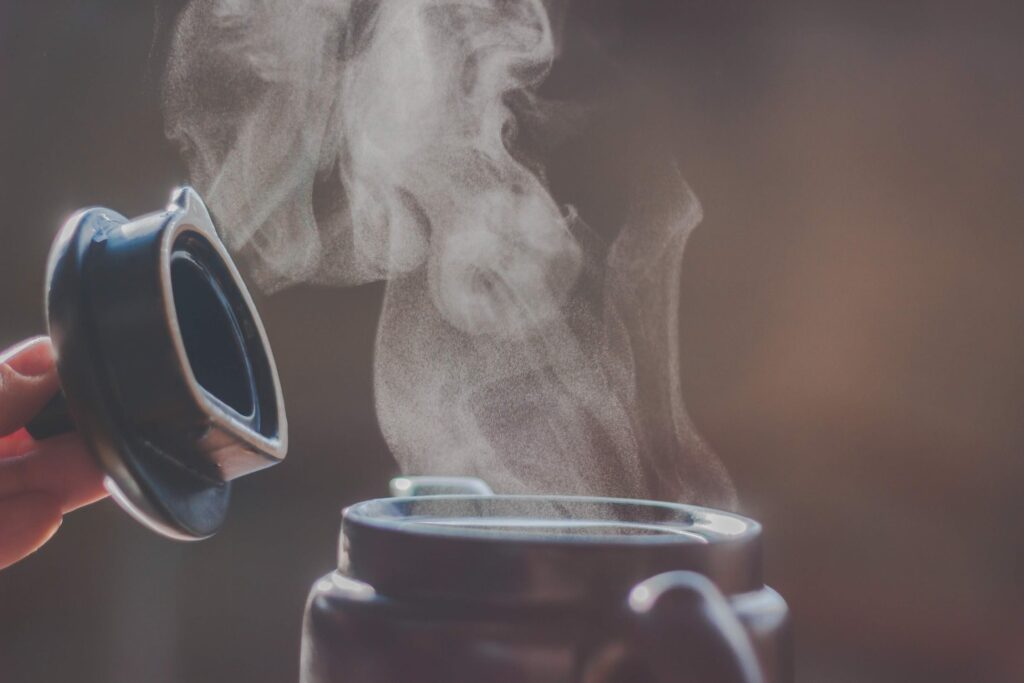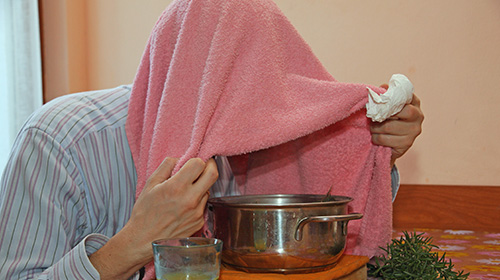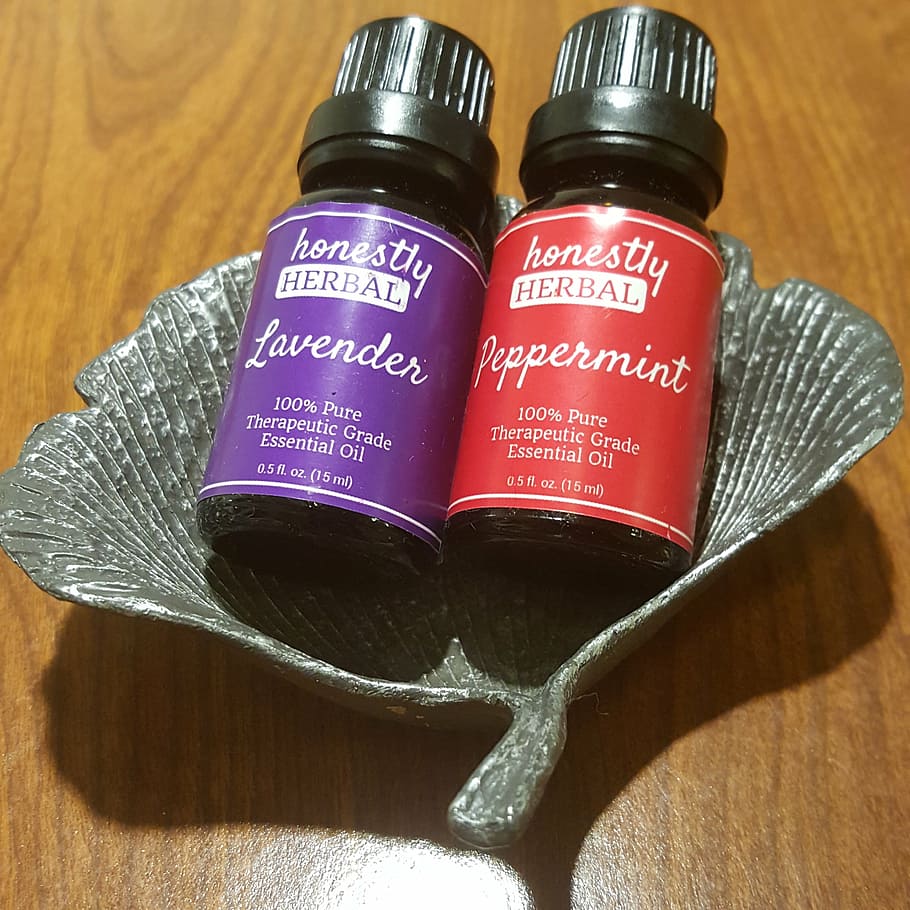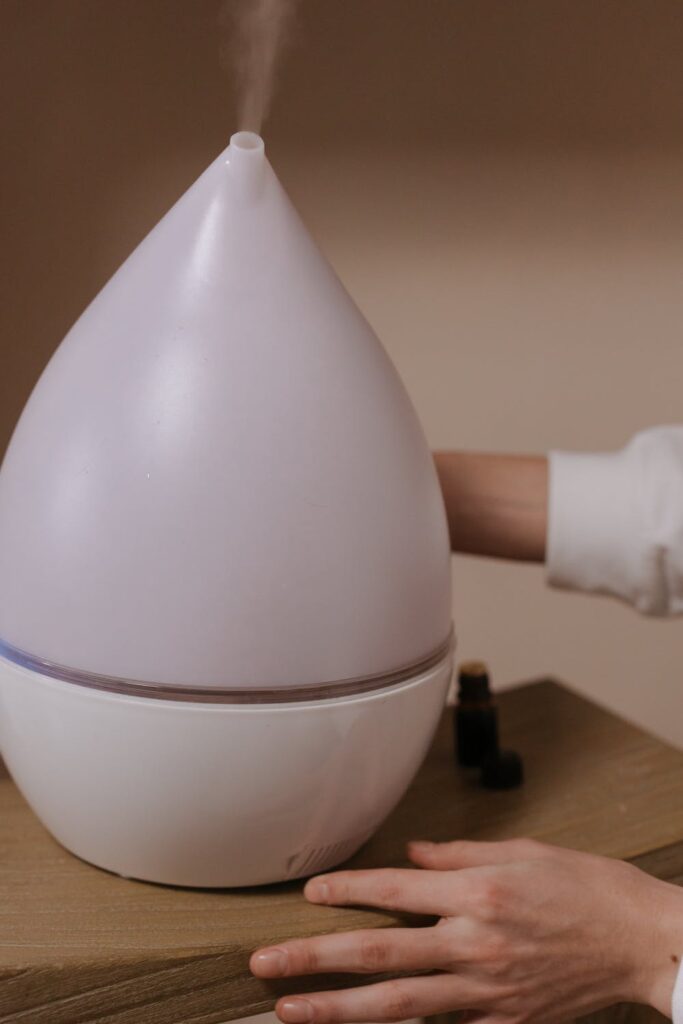
If you’re wondering how to do steam inhalation for sinusitis, it is usually done by filling a bowl with steaming hot water and leaning over it to fully absorb all the steam.
When you inhale steam, it helps to hydrate the nasal cavity, which can soothe irritated nasal passages. The warm moisture also increases blood flow, opening up the sinus cavities and promoting better drainage. This can bring relief from symptoms like nasal congestion and sinus pain.
In this article, we, a naturopathic urgent care in Portland, will guide you on how to do steam inhalation for sinusitis properly, so you can experience the benefits of this natural remedy.
How To Do Steam Inhalation For Sinusitis Properly
Steam inhalation is a simple home remedy that can provide relief for sinusitis, which is the inflammation of the sinuses. Steam treatments can help to clear your nasal passages, reduce congestion, and alleviate sinus pain.
Steam inhalation involves breathing in warm, moist air to help alleviate sinusitis symptoms and promote sinus drainage. It moisturizes the nasal passage, reduces inflammation, and loosens mucus, which makes it easier to breathe.
Here’s how to do steam inhalation for sinusitis properly to ensure the effectiveness of steam inhalation.
Method 1: Steam Therapy Method

Image Source: Gulf Coast Breathe Free
This is the most common way to inhale steam for sinus infections. Here’s how to do steam inhalation for sinusitis using the steam therapy method:
Step 1: Gather your supplies
You’ll need a bowl or basin, hot water, a towel, and optional essential oils like eucalyptus or tea tree oil. These oils can further open up your airways and provide a soothing effect.
Step 2: Set up the steam
Next, boil a pot with water and carefully pour it into the bowl or basin. Be cautious when handling hot water to avoid burns. You can also add a few drops of your chosen essential oil to enhance the steam’s benefits.
Step 3: Position yourself
Find a comfortable place to sit where you can easily lean over the bowl. Place the bowl on a stable surface like a table, and sit directly in front of it. Lower your face towards the bowl, and drape a towel over your head to create a tent. This helps trap the steam inside, which is essential for inhalation.
Step 4: Inhale
Now, start inhaling the steam. Gently breathe in through your nose, taking in the warm steam. Pay attention to the soothing sensation as it works its magic on your airways and sinus passages. It is recommended to breathe deeply for about 10-15 minutes to maximize the benefits.
Take note:
Remember to take breaks if you feel uncomfortable or overwhelmed by the heat. The steam should feel warm and soothing, not too hot to handle.
If you have sensitive skin or are prone to burns, maintain a safe distance from the bowl to avoid direct contact with the hot steam.
You can repeat this steam inhalation method up to four times a day or as needed. But, do not overdo it as excessive steam inhalation may have adverse effects on your respiratory system.
Optional: Steaming With Herbs

You choose to add herbs to your steam inhalation. Here’s the amount of herbs and essential oils that you can add for maximum benefits.
For every quart of water, add 1-2 drops of essential oil or 1/2 teaspoon of dried herb. Popular choices include eucalyptus, peppermint, or chamomile, which are known for their soothing and decongestant properties. These herbs can provide additional relief for sinus congestion.
But before using any new herb, conduct a sensitivity test. To do this, apply a small amount of the herb or essential oil to your forearm and wait for any adverse reactions such as redness or itching. If there are no negative effects within 24 hours, it should be safe for you to proceed with the steam inhalation.
Method 2: Steam Vaporizer Or Humidifier Method

Image Source: Cottonbro Studio
If you’re looking for a simple and effective way to relieve sinus congestion caused by respiratory tract infections, using a steam vaporizer or humidifier with a HEPA filter can be a great option. This method involves using electricity to heat water and create steam, which you can then inhale to clear your nasal passages and reduce inflammation. Here’s how.
Step 1: Choose a good location
When using a steam vaporizer or humidifier, make sure to place the device on a stable surface, away from the reach of children and pets. Read the manufacturer’s instructions beforehand and never leave it unattended as well.
Step 2: Add the water
To use a steam vaporizer or humidifier for steam inhalation, start by filling it with lots of water. Be sure to use clean, distilled water to avoid any impurities.
Step 3: Position yourself and the device
Place the device in a safe and convenient location where you can sit comfortably with your face at a safe distance. Once the steam has started to generate, position your face above the vapor or mist, making sure to maintain a safe distance to avoid any burns.
Breathe in slowly and deeply through your nose, allowing the warm steam to enter your nasal passages and provide relief for your sinus congestion.
Take note:
It’s recommended to inhale the steam for about 10-15 minutes for optimal benefits. However, be cautious not to overdo it, as excessive steam inhalation might have adverse effects on your respiratory system. If you start to feel uncomfortable or overwhelmed by the heat, take a break and move away from the steam.
What are the benefits of steam inhalation?
Are you tired of dealing with a stuffy nose, sore throat, and difficulty breathing due to sinus congestion? A simple and natural solution that can provide you with proven temporary relief is having a steam inhalation for sinusitis.
Mucus Thinning
One of the main benefits of steam inhalation is that it can help loosen and thin the mucus in your nasal passages. When you have sinusitis, the excess mucus can block your nasal passages and cause discomfort.
As you inhale the warm steam, the heat and moisture help to break up the mucus membranes, making it easier for you to breathe. This can provide immediate relief from symptoms of sinusitis, such as a runny nose, congestion, and reduced sense or loss of smell.
Reduces Inflammation
In addition to thinning the mucous membranes, steam inhalation also helps to reduce inflammation in the nasal polyps. When you have recurrent sinus symptoms, the tissues in your nasal passages may become swollen and irritated, which leads to discomfort and breathing difficulties. The warm steam helps to soothe and relax these tissues, reducing inflammation and allowing for easier breathing.
Take note:
If you have chronic or recurrent sinus issues, it’s always best to consult with a naturopathic health care provider or a primary care physician for the usual care, proper diagnosis, and treatment.
They may recommend additional interventions such as Neti pot nasal irrigation, nasal sprays, postnasal drips, or prescription medications to address the underlying causes of your chronic or acute sinusitis.
Mistakes To Avoid When Inhaling Steam
Steam inhalation is a popular and effective method for relieving clogged sinuses. However, you have to use proper techniques and avoid common mistakes to ensure safety and maximize the benefits of this natural treatment.
Here are some mistakes to avoid when inhaling steam for recurrent sinusitis:
Don’t bring the essential oils to your nose
When it comes to steam inhalation for sinusitis, use caution and avoid certain practices that could be harmful. One such practice is bringing essential oils directly to your nose during steam inhalation. While essential oils have their own benefits and uses, they should not be used in this specific manner.
The nasal tissue is extremely sensitive, and introducing essential oils directly into the nostrils can pose risks and dangers. Essential oils are highly concentrated substances that can potentially cause skin issues, eye infections, cell damage, burns, and injuries when applied directly to sensitive nasal tissue. This can result in discomfort, adverse reactions, and even long-term complications.
To safely and effectively perform steam inhalation for sinusitis, avoid placing essential oils directly in the nostrils. Instead, focus on using clean, filtered water as the steam source. This will help to alleviate chronic sinus congestion and provide relief without posing any unnecessary risks or dangers.
Avoid steam that’s very hot
Steam should be warm, but not scalding, as excessively hot steam can cause burns and further irritate the sensitive nasal polyps.
To ensure the steam is at a safe temperature, start by boiling water and then allow it to cool for a few minutes. This will prevent the steam from being too hot and help to avoid any potential risks or dangers. Remember, the goal is to provide relief and comfort, not to cause more discomfort or harm.
Do not put your face too close to the steam
Another precaution to keep in mind is to avoid getting too close to the boiling water when performing steam inhalation. Placing your face too close to the pot of boiling water can increase the risk of burns and thermal injuries. Stay at a comfortable distance and allow the steam to rise and envelop your face naturally.
Steam Inhalation Side Effects
Steam inhalation is a popular natural remedy for acute or chronic sinusitis, a condition characterized by inflammation and congestion of your pairs of sinuses. It can help alleviate symptoms such as nasal congestion, sinus pain, and headaches.
But like any other treatment, you have to be aware of potential side effects and take proper precautions to ensure a safe and effective experience.
Dryness
One of the main skin issues that can occur with steam inhalation is dryness. The hot steam can strip away the skin’s natural oils, leaving it feeling tight and parched.
To prevent this, keep your skin moisturized. Before starting steam inhalation, apply a thin layer of moisturizer to create a protective barrier. Afterward, be sure to moisturize again to replenish lost moisture and maintain skin hydration.
Bacterial Growth
Another concern is bacterial growth. The warm and moist environment created by steam inhalation can promote bacterial growth on the skin. This can lead to acne breakouts or other skin infections.
To minimize the risk of bacterial growth, cleanse your face thoroughly using a gentle cleanser before steam inhalation. Afterward, gently pat dry the skin and avoid touching your face with unwashed hands.
Redness And Itching
Redness and itching are other potential skin issues to be aware of. The heat from the steam can cause temporary redness and itching, especially if you have sensitive skin.
If you experience these symptoms, try lowering the steam temperature or reducing the duration of your steam inhalation session. You can also apply a cool compress or a soothing gel after steam inhalation to help alleviate any discomfort.
Eye Infections
Eye infections from steam inhalation can manifest as redness, itching, and a feeling of grittiness in the eyes. In severe cases, there may be discharge and blurred vision. These severe symptoms can be caused by the heat and moisture from the steam irritating the delicate tissues of the eyes, as well as by bacteria or allergens present in the steam.
To prevent this, make sure the temperature is just right. Also ensure that the steam doesn’t come into direct contact with your eyes.
You can also minimize the risk of eye infections by using clean and distilled cups of water for steam inhalation. Tap water may contain impurities that can irritate the eyes or introduce harmful bacteria. Try to limit the duration and frequency of steam inhalation sessions as well to reduce the strain on your eyes.
Cell Damage
Prolonged exposure to steam can lead to cellular damage in the throat and nose. The hot steam can cause inflammation and irritation in these delicate tissues, potentially leading to long-term nose cell damage if not managed properly.
Nerve Cell Numbness
Extended steam inhalation may also lead to temporary numbness of nerve cells within the nasal passage. This can occur due to excessive heat and moisture, causing a sensation of reduced sensitivity in the affected area. While this numbness is usually temporary, do not overexpose yourself to steam, and always prioritize your safety.
Weakened Immune System
Another potential effect of excessive steam inhalation for sinusitis is the weakening of the immune system. Frequent exposure to high temperatures can strain your body’s natural defense mechanisms, compromising your immune response. This can leave you more susceptible to respiratory infections and make it harder for your body to fight off pathogens.
Burn Or Injury
When performing steam inhalation for sinusitis, take precautions to prevent burns or injuries. Steam is hot, and if not handled correctly, it can cause harm to your skin and sensitive nasal passages. To ensure your safety, follow these guidelines:
Temperature Check
Before you begin steam inhalation, make sure the water is at a safe temperature. It should be comfortably warm, not scalding hot. Use a thermometer to test the warm water, or simply dip your finger in to gauge the heat.
Distance Matters
Maintain a safe distance from the steaming water to avoid direct contact with the hot steam. A recommended distance is around 12 inches or more. This way, you can still benefit from the steam without risking burns or injuries.
Time Limit
Limit the duration of your steam inhalation sessions. Five to ten minutes is usually sufficient for most individuals. Prolonged exposure to steam can increase the risk of burns or injuries. Be mindful of the time and listen to your body if you start feeling uncomfortable.
Take note:
While precautions can greatly reduce the risk of burns or injuries, accidents can still happen. Be on the lookout and recognize the signs of severe burns that require immediate medical treatment. Seek emergency medical help if you experience:
– Blisters or open wounds
– Skin that appears white, leathery, or charred
– Severe pain or numbness
– Difficulty breathing or swallowing
– Fainting or loss of consciousness
If you or someone else experiences any of these symptoms, do not hesitate to call for medical assistance. Prompt medical attention is very important in these cases to prevent further complications.
How to Do Steam Inhalation for Sinusitis: FAQs
Are there more ways to do steam inhalation?
Yes, there are alternative methods you can try. Some people find relief by standing in a hot shower and inhaling the steam or using a facial steamer. Some individuals also use devices specifically designed for nasal steam inhalation, such as a steam inhaler.
How often should I do steam inhalation for sinusitis?
The frequency of steam inhalation sessions depends on your symptoms and personal preference. Generally, it’s safe to do daily steam inhalation for sinusitis– one to two times per day. However, be mindful of your body’s response and adjust accordingly. If your symptoms worsen or persist, consult a healthcare professional.
Can children do steam inhalation for sinusitis?
Children under age 7 should not use steam inhalation, as their skin is more sensitive and they may not be able to tolerate the heat. For older children, remind them to stay back from the steam and wear protective goggles to shield their eyes from any potential splashes or steam.
Is it safe to inhale steam when you’re pregnant?
Many pregnant women experience nasal congestion due to increased blood flow and hormonal changes. Luckily, steam inhalation for sinusitis is safe for pregnant women and can provide some relief. Just exercise caution and ensure that the steam is not too hot.
Can you use a nebulizer for steam inhalation?
Nebulizer, which is typically used to treat chest congestion, may not be the best option for steam inhalation to relieve nose blockage.
Nebulizers are designed to convert liquid medication into a fine mist that can be inhaled into the lungs. While they can effectively deliver medication to the respiratory system, they may not address the specific needs of nasal congestion caused by acute or chronic sinusitis. The mist produced by a nebulizer is designed to reach the lower respiratory tract, and therefore may not provide the same benefits for nose blockage.
Recap: How To Do Steam Inhalation For Sinusitis
There are a lot of methods to try. But if you’re still confused and don’t know which way to go, the best way to do so is through these 8 easy steps:
1. Boil a pot of water.
2. Carefully pour the hot water into a heat-safe bowl.
3. Add a few drops of essential oils (such as eucalyptus or tea tree oil) if desired.
4. Sit down and position your face at a safe distance from the steaming water, about 12 inches or more.
5. Close your eyes and slowly inhale the steam through your nose.
6. Continue inhaling for about five to ten minutes.
7. Take breaks if you feel any discomfort or lightheadedness.
8. After you’re done, pat your face with a clean towel to remove any excess moisture.
Consult With Naturopathic Health Care Professionals
If you’re seeking alternative approaches such as steam inhalation to manage your sinusitis symptoms, consulting with a naturopathic doctor like CleanCure in Portland may be a wise choice to improve your quality of life.
With our personalized natural sinusitis treatment plans, holistic remedies, and primary care practices, we can provide you with a comprehensive and effective approach to healing– with tips on how to do steam inhalation for sinusitis effectively and other natural supplements to give you the cleanest, most effective natural healing possible– right at the comfort of your home.











